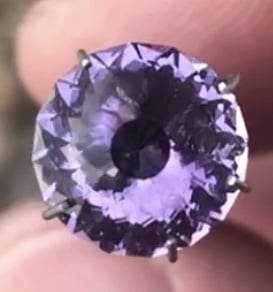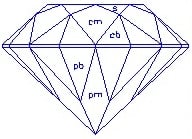I’ve mentioned critical angle and refractive index in previous posts, but never really described what they are and how they affect light return and stone design. I’m going to discuss this at a very general level in this post.
Refractive index (RI): This is the speed of light divided by the speed of light as it travels through the material. The higher the RI the greater the angle that light bends at the interface between the air and material.
Critical Angle (CA): The angle which light is internally reflected rather than refracted.
Lets take a look at a semi-standard cut:
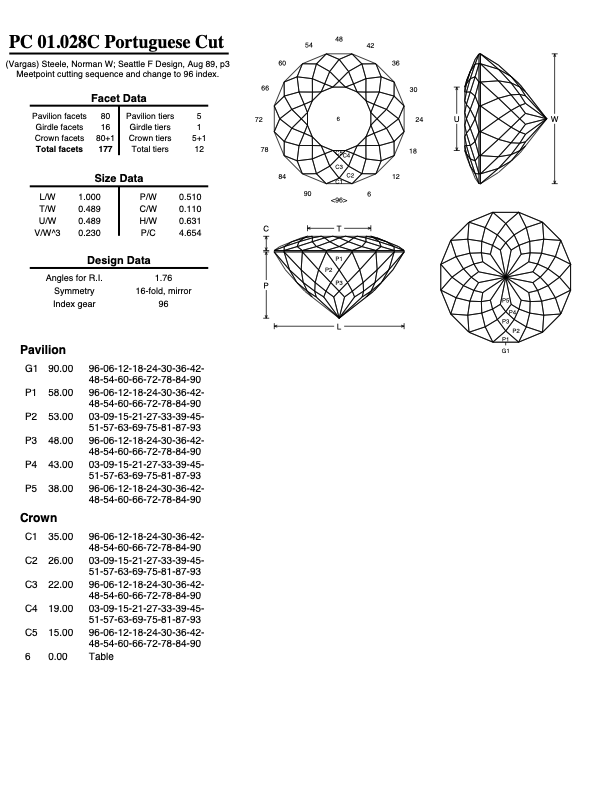
This design was done for Sapphires with a RI of 1.76, and a critical angle of 34.6 degrees. I’m only going to focus on how the light returns from a ray that is directly fired through the table. For this, we want to look at the last tier of the pavilion P5 which is cut at an angle of 38 degrees.
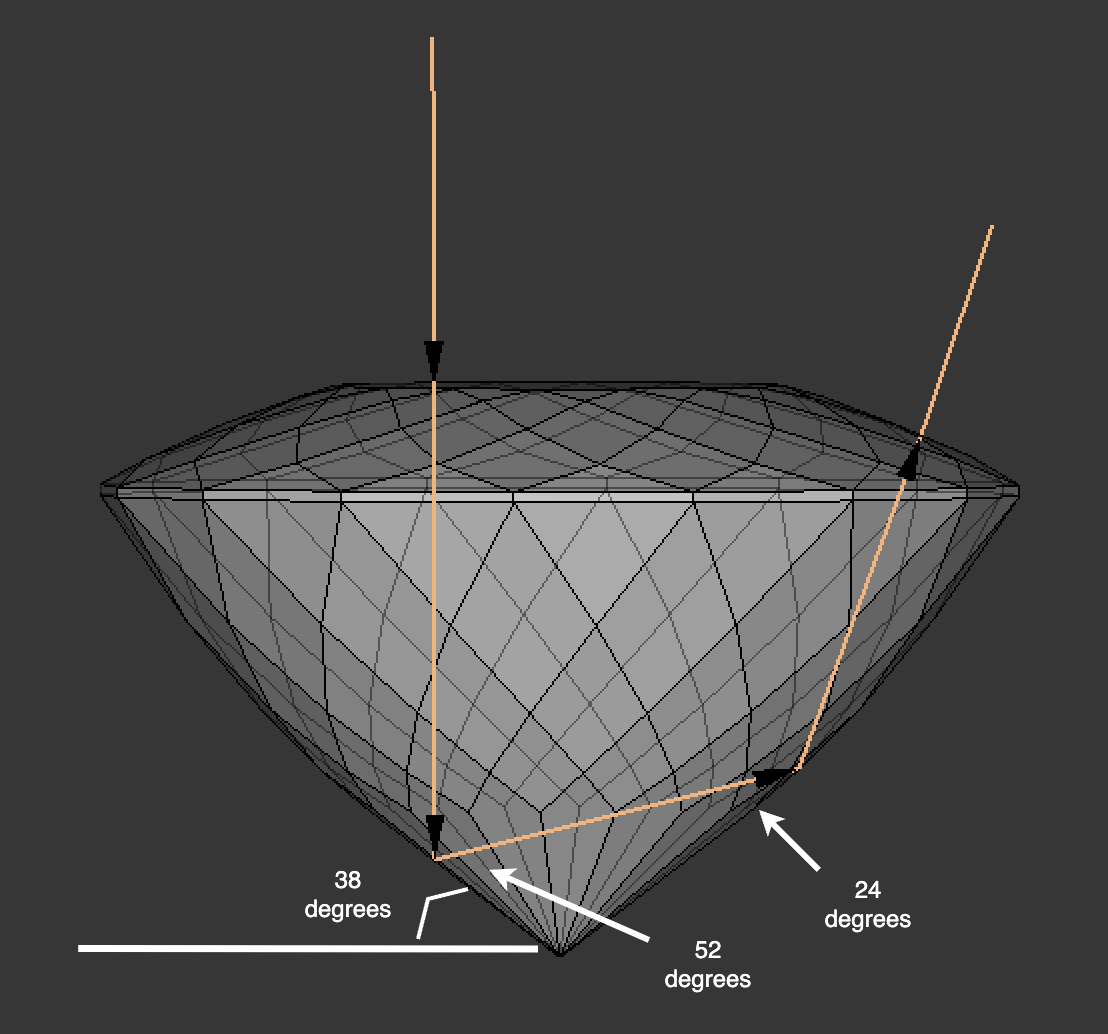
In the diagram above there is a light ray that shoots through the table and hits a facet on P5. The 38 degree angle is the angle shown and is greater than the critical angle, therefore the ray is reflected back into the stone.
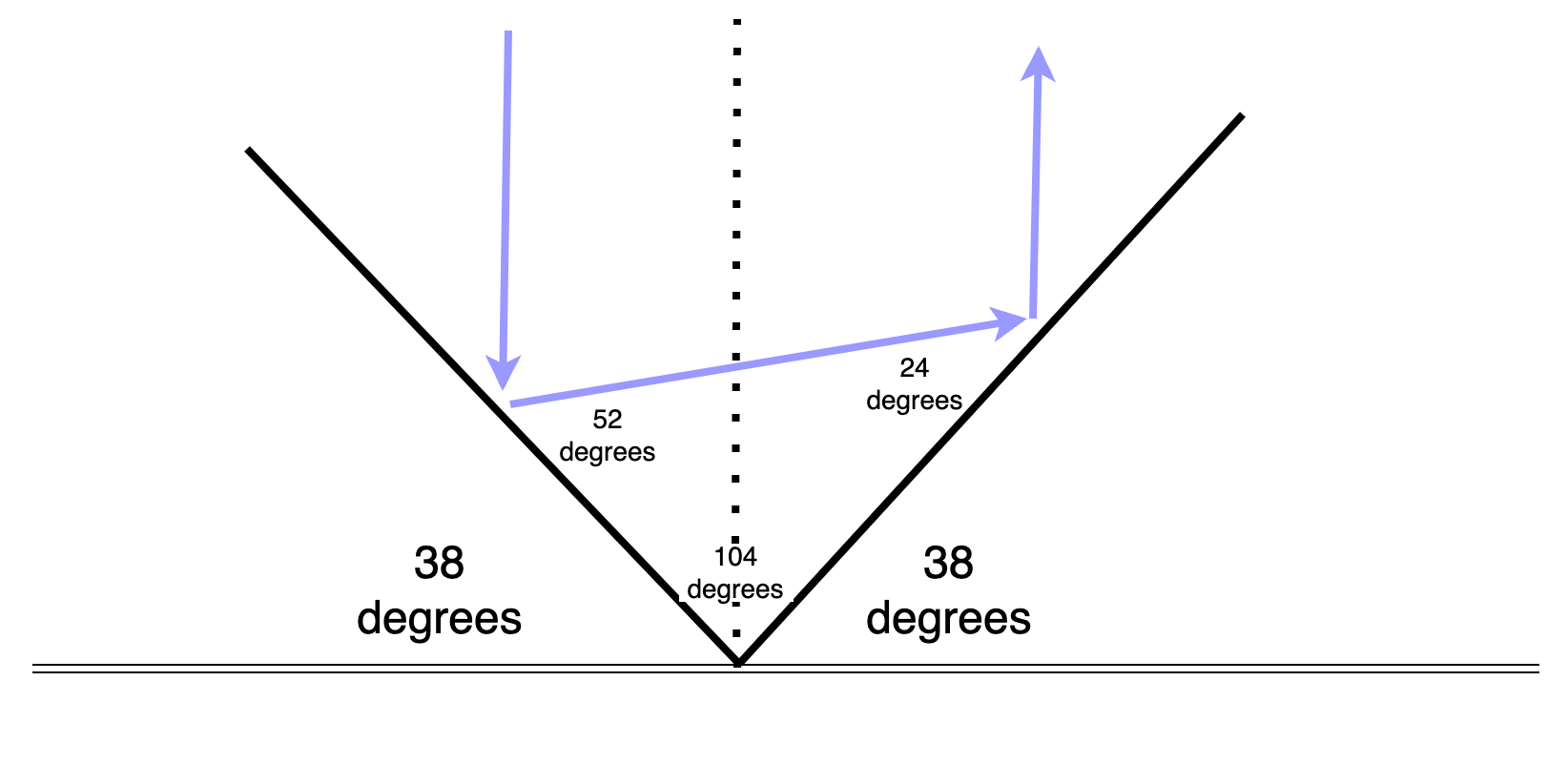
The ray will reflect back at an angle of 52 degrees from the facet surface which is 90 - 38 = 52. It will pass across the pavilion and intersect at an angle of 24 degrees. This is because it forms a triangle and the sum of angles in a triangle must equal 180 degrees. As shown the interior angle of the cutlet (tip of the pavilion) is 104 degrees. Now testing the new intersection 90 - 24 = 66 degrees which is greater than the critical angle, and this ray will reflect back.
Obviously not all light rays will reflect back, many will just refract through the stone, and that’s ok as that helps deepen the color.
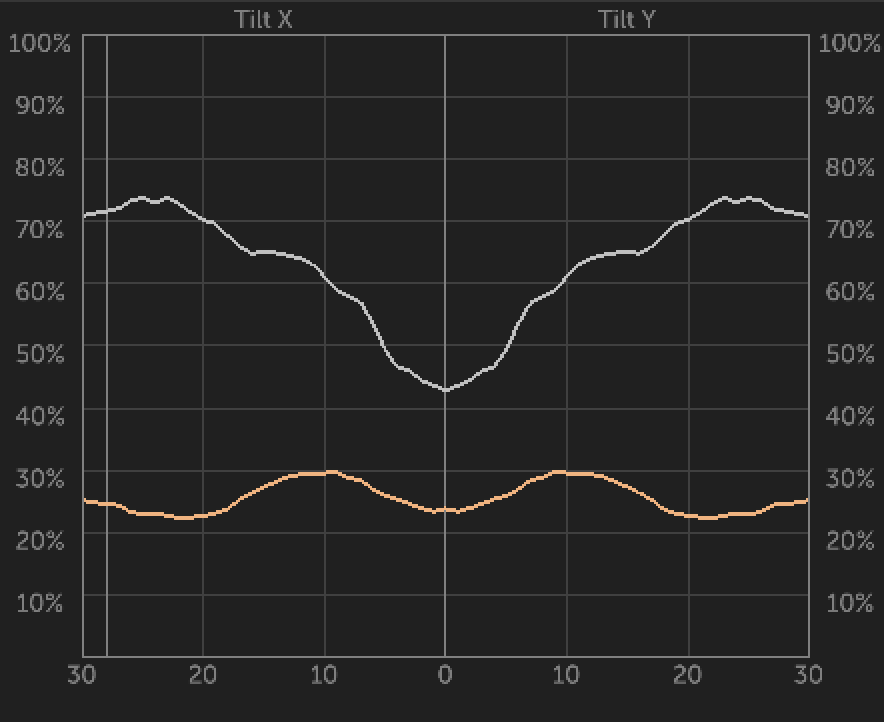
For this cut the above graph shows how much light return happens based on how the stone is tilted left to right. The center of the graph would be looking straight down.
I am by no means an expert and have glossed over some of the details, but I hope this provides some insight for those of you interested in this interesting craft.
You can read a more detailed breakdown of the above at the US Faceters Guild Website
